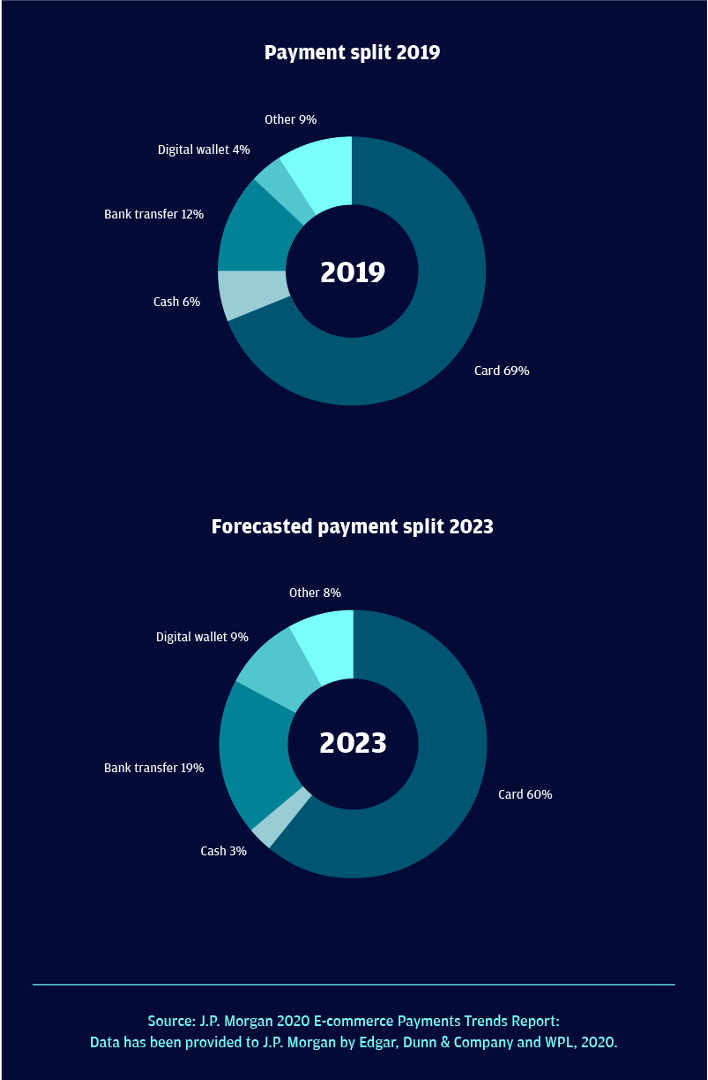Insights >
Japanese Ecommerce: Payments, Tax, Insurance & Tariffs


New: Japanese Consumer Behaviour – 2025 report | download for FREE >>


Japan has the 4th largest ecommerce market in the world1 behind China, the U.S., and the U.K. As of 2021, Japan’s ecommerce market is set to be worth $150.1 billion (£105.7 billion), with a compound annual growth rate of 6.2 per cent, according to a 2020 report by JP Morgan. Given its growth, it is likely that more foreign entities will want to make the leap over to Japan’s ecommerce market in the coming years.
With the industry growing, there are an increasing number of options when it comes to payment technology and insurance options. Plus, there are hurdles to overcome such as tax and cross-border tariffs. It can be difficult to navigate through it all, especially as much of the information online is only available in Japanese. In this article, we will discuss the behind-the-scenes to ecommerce in Japan: payments, tax, insurance and tariffs. If instead, you are looking for a blog on how to start selling your consumer product in Japan through ecommerce then please read this article.

When paying for something online in Japan, the consumer has a number of different options available to them. But according to research carried out by JP Morgan (see graphic), paying by card is the most popular form of purchasing online in Japan, taking 69% of the payments market. As well as this, credit cards are favoured over debit cards and domestic brand JCB is the leading card issuer2.
Unlike in the UK and other economies, cash still dominates the physical retail space. This also extends to ecommerce where cash-on-delivery remains a normal way of paying as many couriers accept payment at consumers’ doorsteps. Konbini culture, whereby a shopper pays for online products via convenience store ATMs, also persists. Japan’s 55,000+ konbini are popular with both teenagers without bank accounts or access to credit, and older generations seeking the security and simplicity of cash. Cash methods are, however, expected to shrink by 2023, driven in part by hygiene concerns post-COVID-19.3
Digital wallets are set to be the fastest-growing payment method from now until 2023, fuelled by rising smartphone penetration and major Japanese e-commerce giants launching wallets, such as Rakuten Pay. But, as in other markets, this new method of payment has some way to go to unseat card payments. If you are particularly interested in recent Japanese ecommerce trends then please read our blogs titled
Japanese ecommerce trends: how supply and demand has changed and how ecommerce has affected the Japanese luxury market.

Ecommerce businesses are almost always required to have insurance due to the risk of professional mistakes in selling incorrect items or damaging inventory and property. You may need insurance for the following reasons:
In order to choose the right insurance, it is very important to get advice which many of the major ecommerce platforms offer in Japan. Please read our blogs on the Top 6 ecommerce platforms in Japan and a guide to the most popular ecommerce marketplaces in Japan for lists.
The very nature of cross-border ecommerce is to sell and move products from one nation to another. Whenever this happens, it is important to know about the tax (including VAT) and tariff implications that might apply. Luckily, businesses are not on their own. Websites like Trade with Japan (UK specific) are very useful in helping you to untangle what is at play. In the same way as with insurance, many of the major Japanese ecommerce platforms offer advice on how to navigate this effectively.
In fact, if you are looking to start selling in Japan-exclusive marketplaces, we at DFMA have a new solution for overseas sellers interested in selling in Japan. Through our partnership with a SoftBank ecommerce subsidiary, we can help you sell your products on Pay Pay Mall. We can also take care of fulfilment, logistics, and customer support as long as you provide the inventory. Contact us to learn more.

Since it may be necessary to partner up with local distributors and agencies to start selling in Japan, organisations such as the Department for International Trade and Export to Japan can help you find such partnerships.
There are many things to consider before expanding your ecommerce business to Japan. We hope this article will help make things more clear as you begin your cross-border ecommerce journey. As mentioned above, we at DMFA can help you start selling online or with any other digital marketing needs. Please do not hesitate to contact us, and one of our bilingual account managers will get back to you shortly.
1Source: eMarketer (December 2020)
2Source: J.P. Morgan 2020 E-commerce Payments Trends Report: Data has been provided to J.P. Morgan by Edgar, Dunn & Company and WPL, 2020.
3Source: J.P. Morgan 2020 E-commerce Payments Trends Report: Data has been provided to J.P. Morgan by Edgar, Dunn & Company and WPL, 2020.